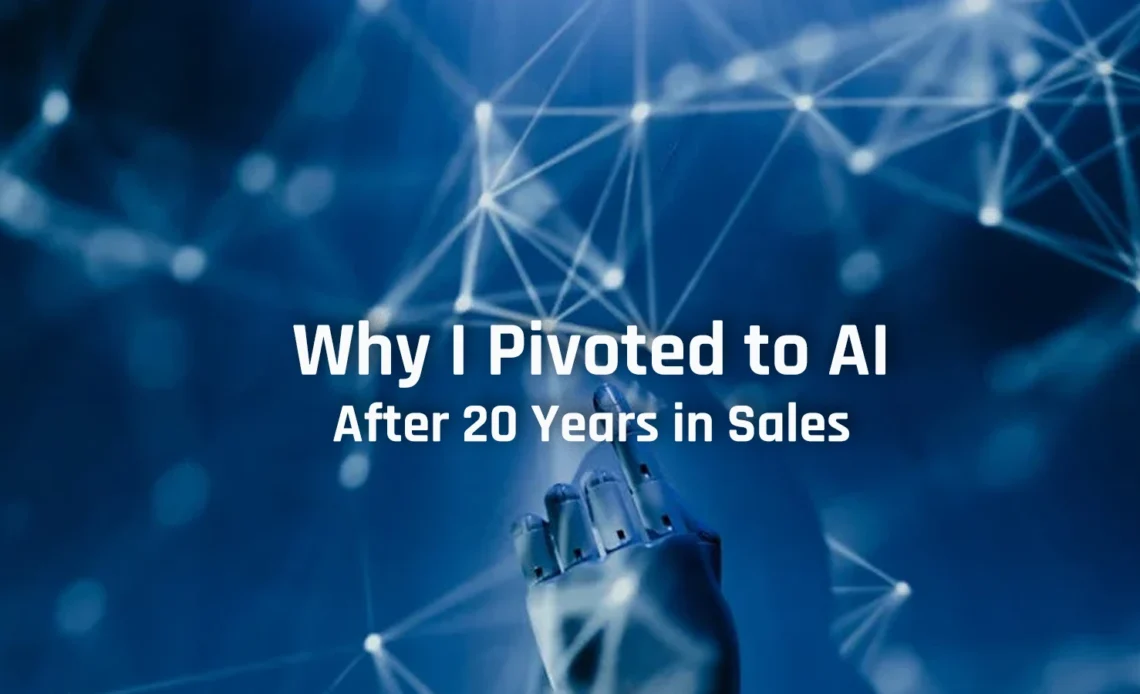Patterns That No Longer Fit
Twenty years in enterprise sales across Africa, the Middle East, and Europe gave me a deep respect for patterns. The rhythm of quarterly closes. The art of reading a room before a word is spoken. The trust built with partners over coffee in Casablanca, or in a boardroom high above Dubai. Sales is not just about numbers. It is about sensing the invisible signals that drive people to say yes.
For most of my career, these patterns held true. Until one day, they didn’t.
The Signal That Changed Everything
What shifted was not the customer. It was the intelligence behind the system. AI was no longer a quiet feature in the background. It was starting to shape how forecasts were built, how territories were planned, how opportunities were prioritized. The very fabric of go-to-market execution was being rewoven.
I had a choice: hold onto what I knew, or step into what I did not yet understand.
So after two decades of closing multimillion-dollar deals and building ecosystems across EMEA, I did something unexpected. I became a student again.
Back to Learning, Forward to Leading
I enrolled in a Master of Data Science program. I signed up for executive courses in AI, Deep Learning, and Generative AI. I stopped just talking about models and started training them. I learned to experiment, to test, to fail, and to iterate.
At first it was humbling. Some days it was uncomfortable. But the discomfort was a reminder that growth was happening.
And with every new insight, I began to see sales through a different lens.
From Intuition to Intelligence
Today, my work is still rooted in strategy and execution. But my toolkit has changed.
✅ Predictive analytics helps me segment partners with precision.
✅ Churn models flag accounts at risk before the relationship weakens.
✅ Intelligent dashboards replace static reports, giving me real-time visibility.
✅ Generative AI co-creates proposals and messaging that once took weeks.
It is no longer about replacing intuition with machines. It is about augmenting intuition with intelligence. The result is not just better forecasting.
It is faster learning, smarter decisions, and more resilient growth.
The Leadership Lesson
The point of this pivot is not that every executive must become a data scientist. The point is that every leader must become AI fluent. You do not need to code, but you do need to understand. You do not need to train models, but you must know how to ask the right questions of them.
Leadership in the age of AI is not about holding onto the skills that once made us successful. It is about layering them with new ones. The ability to steer intelligent systems will be as important as the ability to build human trust.
Curiosity is the new currency. And complacency is the fastest way to irrelevance.
The Question That Redefined My Path
In the end, the pivot was not just professional. It was personal. It forced me to ask:
Is my current trajectory compatible with a world where machines learn faster than people?
For me, the answer was NO. And that answer changed everything.
Today, I stand at the intersection of sales leadership and AI strategy. Not as two separate careers, but as one integrated vision. A vision where ecosystems scale faster, partners innovate deeper, and leaders stay ahead not by resisting change, but by reimagining themselves.
The future belongs to those who refuse to stand still.


